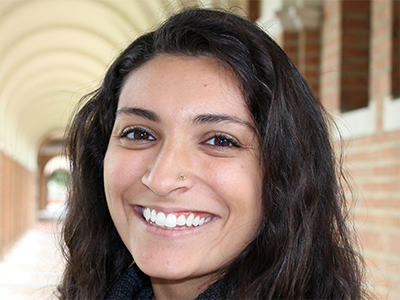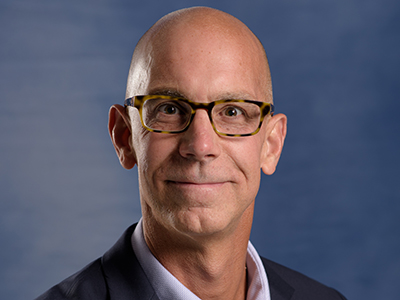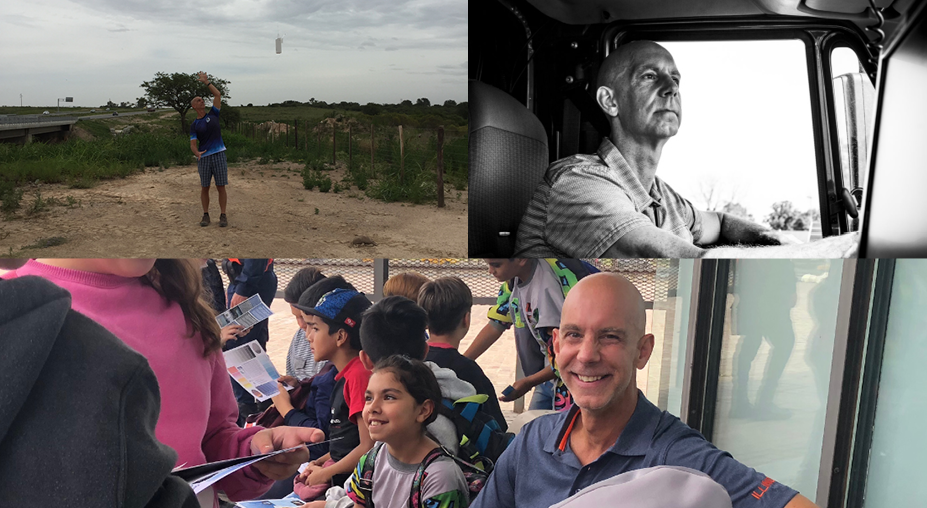Natural Hazards Section Honorees
for Graduate Research

Citation
Avantika Gori received a B.Sc. in 2016 and an M.Sc. in 2018, both in civil and environmental engineering, from Rice University. She is currently working toward a Ph.D. in civil and environmental engineering at Princeton University, where her research, advised by Ning Lin, focuses on investigating and modeling joint hazards and compound flooding from tropical cyclones in a changing climate. Her research interests lie more broadly in multihazard coastal risk assessment under nonstationary climate and environmental conditions. She has received several prestigious fellowships, including the National Defense Science and Engineering Graduate Fellowship from the U.S. Department of Defense and the Honorific Fellowship from Princeton University. She has published 12 papers in high-impact journals, including Nature Climate Change.
—Ning Lin, Princeton University, Princeton, N.J.
Response
I am honored and grateful to have received the Natural Hazards Section Award for Graduate Research. Thank you very much to my adviser, Dr. Ning Lin, for nominating me for this award and to Dr. Thomas Wahl and Dr. Jeroen Aerts for their support and enthusiasm. Over the past 4 years I have benefited from the exemplary mentorship of Dr. Lin, and under her guidance I have become a more thoughtful, insightful, and passionate researcher. I have also been inspired by the work of Dr. Wahl and Dr. Aerts, particularly in the area of flood risk, resilience, and adaptation. As I continue my career as a natural hazards researcher, I hope to generate similarly impactful research and contribute meaningfully to flood adaptation efforts across the globe.
—Avantika Gori, Princeton University, Princeton, N.J.

Citation
As the Ph.D. adviser of Dr. Xie Hu, I congratulate Xie for the 2022 AGU Natural Hazards Early Career Award for the innovative study of natural hazards using radar remote sensing and geophysical modeling.
Xie received a B.S. in GIS from China University of Geosciences, Wuhan, in 2011 and an M.S. in remote sensing from Wuhan University, Wuhan, China, in 2013. She joined Southern Methodist University (SMU) in August 2014 to pursue a Ph.D. in geophysics with a focus on natural hazards studies using interferometric synthetic aperture radar (InSAR) observations and geophysical modeling. After Xie received her Ph.D. from SMU in 2018, she worked with Prof. Roland Bürgmann at the University of California, Berkeley as a postdoc during 2018–2020. After being an assistant professor at the University of Houston for 1 year, Xie joined the College of Urban and Environmental Sciences at Peking University in 2021.
Xie’s research focuses on using remote sensing data, especially InSAR, to characterize ground deformation and surface disturbance associated with natural hazards. She also has been engaged in investigating triggering mechanisms of natural hazards based on statistical, numerical, and analytical models, and artificial intelligence. Her interdisciplinary research spans the fields of natural hazards, geodesy, geophysics, geology, hydrology, civil and environmental engineering, and climate sciences.
As an early-career scientist, Xie is already scientifically prolific in natural hazards studies. She published 20 papers in high-impact journals, including 13 first-authored ones. A glimpse into her research highlights includes the following: (1) quantifying surface deformation and inverting subsurface channel geometry/thickness and hydrogeological forcings of landslides; (2) unveiling and forecasting the decaying consolidation settlement of tailings impoundment and surface deformation associated with mountain excavation and city construction; (3) investigating stress perturbations and seismicity due to mining waste transfer and hydrological load changes, and diagnosing hydromechanical coupling in shallow crust during underground coal mining; (4) quantifying water storage cycles of aquifers and basin-wide hydrogeological properties by correlating seasonal displacements and groundwater levels; and (5) synergizing hydroclimatic, topographic, geological, and seismological data sets to characterize land motions and surface disturbance due to winter storms using machine learning.
Xie is an early-career scientist of high diligence and intelligence and has demonstrated outstanding critical thinking and exceptional capability for frontier research. Xie is innovative in her scientific interests in a very broad range of natural and anthropogenic hazards using advanced tools and methods, and hence truly deserves the 2022 Natural Hazards Early Career Award.
—Zhong Lu, Southern Methodist University, Dallas, Texas
Response
I feel truly honored to receive this AGU Natural Hazards Early Career Award. I am grateful to my advisers, mentors, and colleagues for their nomination and recognition in a common research field that I have been dedicated to for the past decade. Natural hazards generalize the environmental phenomena that put lives and property at risk. Everyone around the world is vulnerable to natural hazards. Research on natural hazards requires cross-disciplinary knowledge to bridge the gaps between observations and mechanisms, between risks and policies, and between engineering and science. Enlightened by the academic programs in geophysics, remote sensing, and GIS that I enrolled in and by numerous critical discussions with my advisers and colleagues, I was motivated to research natural hazards using remote sensing data and methods. My research has been relying on radar remote sensing and mathematical and physical models to elucidate the spatial and temporal ground deformation and land cover changes associated with natural hazards such as landslides, groundwater depletion, and extreme precipitation events. Beyond that, we also explore the role of geological and hydroclimatic variables as well as human activities in the timing, geographic locations, and triggering mechanisms of individual and cascading hazardous event(s).
Like many early-career scientists in their thirties from different parts of the world, we are in an age with seemingly insurmountable challenges. This recognition from our field of professionals gives me enormous strength to keep moving forward. I will continue developing remote sensing methods and quantitative models to better understand the dynamic processes and mechanisms of natural hazards. As a junior faculty, I hope my teaching and advisership can help the younger generations gain a better understanding of natural hazards, motivate their knowledge-seeking behaviors, and develop their career paths in related fields.
—Xie Hu, Peking University, Beijing
Field Photos
Award and Lecture

Citation
Prof. Robert J. (Jeff) Trapp is a wonderful person and a great scientist. Along with his groundbreaking research that I highlight below, I want to start by acknowledging the strong diversity of his graduate program where Jeff has been a leader in bringing more women and minority students into careers in science. In his research, Jeff has made major contributions to the fundamental understanding of a remarkable range of severe weather hazards, particularly tornadoes and damaging thunderstorm winds. Using innovative approaches, he has also discovered patterns in the climatological/statistical occurrence of tornadoes (and hail), and he has used these risk assessments to motivate efforts to predict tornado activity over subseasonal to seasonal (S2S) timescales. In addition, he pioneered the study of severe-thunderstorm frequency and intensity in response to climate change.
Jeff’s early work on modes of tornadogenesis helped reconcile a long-standing conflict between observations and theory. His work also provided new insights into the rotational dynamics of quasi-linear convective systems (QLCSs), and then he and colleagues discovered that nearly half of all tornadoes in the U.S. Midwest and Southeast are associated with QLCSs. Jeff is also known for his research on the mechanisms of nontornadic wind damage in thunderstorm systems; for example, Jeff and his collaborators discovered that the most significant winds are often generated by rotating phenomena they termed mesovortices, which have length scales of an order of magnitude larger than tornadoes.
Jeff is one of the world leaders in the assessment of thunderstorm hazard risk. For example, Trapp (2014) showed that the most damaging tornadoes tend to occur during multiday periods of tornado activity. Trapp and Hoogewind (2018) established a robust statistical (and physical) relationship between tornado activity and pan-Arctic sea ice extent.
Jeff’s studies of severe thunderstorm frequency and intensity relative to the changing climate have revealed the likelihood for more intense and more frequent severe thunderstorm hazards in the future. His use of high-resolution, “convection-permitting” dynamical downscaling has also shown that the annual period over which damaging hail occurs will lengthen, begin earlier, and possess more volatility under climate change. Most recently, he and one of his students have developed yet another climate modeling approach that is providing the first evidence of potential increases in tornado intensity due to anthropogenic climate change.
In summary, Jeff is well deserving of the Gilbert F. White Distinguished Award, and I am so pleased to see him so honored.
—Donald J. Wuebbles, University of Illinois at Urbana-Champaign, Urbana
Response
Thank you, Don, for your kind words, and thanks to those who supported this nomination. I’m truly honored to receive this recognition, but I readily acknowledge that it is most reflective of the countless contributions of my incredible students and collaborators. Indeed, I’ve been so fortunate during my career to have been influenced by the diverse experiences and thoughts of professional colleagues and students. I’ve likewise been blessed to have a wife and best friend, Sonia Lasher-Trapp, who also happens to be a research collaborator, sounding board, and fellow educator; and to have children, Noah and Nadine, who make me laugh and keep me humble.
—Robert J. Trapp, University of Illinois at Urbana-Champaign, Urbana

